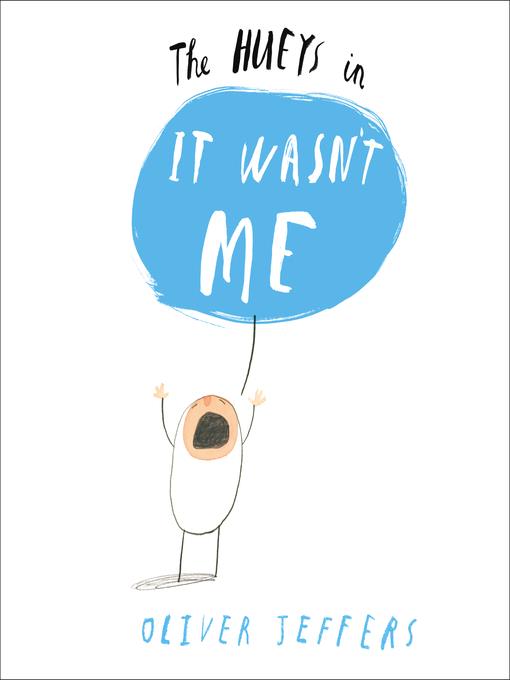
It Wasn't Me
The Hueys Series, Book 2
کتاب های مرتبط
- اطلاعات
- نقد و بررسی
- دیدگاه کاربران
نقد و بررسی

December 9, 2013
Jeffers’s first book about the Hueys quietly extolled the virtues of nonconformity; with equal subtlety (and a touch of dark humor) he explores disagreement in this sequel. “The thing about the Hueys,” Jeffers writes of his egg-shaped, stick-legged crew, “was that most of the time they got along.” But when they fight—Jeffers depicts their argument as a joint speech bubble filled with scribbles, scrawls, storm cloud, hammer, and skull-and-crossbones—it’s up to a Huey named Gillespie to set things right. What’s his trick? Distraction. “Want to see a dead fly?” he asks, and everyone does, naturally. A stylish and sophisticated story that reminds readers that some fights aren’t worth having. Ages 3–5.

November 15, 2013
The Hueys are back, and this time they're testy. Jeffers opens his latest story about a cast of stick-limbed, jelly-bean-shaped, multicolored characters with the line: "The thing about the Hueys... / ...was that most of the time they got along." With this setup, the art on the next page then illustrates a time when they don't. Jeffers eschews background detail and places the Hueys on empty white or monochromatic pages with just scribbled indications of ground and shadow as they stand about talking. The fearlessly spare setting enables the Hueys' simple forms to stand out; speech balloons visually describe their mounting anger. (These are filled first with whimsical flying creatures and objects, then with expressive abstract scribbling to indicate anger and finally with hand-lettered script.) Finally, when a Huey named Gillespie happens upon the scene and asks, "What are you fighting for?" the conflict escalates as one after another denies blame, which gives rise to the book's title. Gillespie, a peacemaker to his Huey core, persists and asks, "WHAT ARE you Fighting ABOUT?" This stumps his peers, and a page drained of all color captures the chagrined silence of this shift in the story. Not one to gloat or rub his cohorts' faces in their pettiness, Gillespie quickly distracts his pals with an enticing invitation: "want to SEE a DEAD Fly?" And who wouldn't? Want to SEE a GOOD Book? Read this one. (Picture book. 4-7)
COPYRIGHT(2013) Kirkus Reviews, ALL RIGHTS RESERVED.

January 1, 2014
Preschool-G The Hueys (first introduced in The Hueys in the New Sweater, 2012) are backin a bigger format and with a new quandary. The opening endpapers show our round, resolute friends having a conversation about how to address a pesky fly (the conversation, in typical Jeffers fashion, happens in pictures, not words). The story continues with five differently colored Hueys enthusing about all manner of flying objects, but soon, out of nowhere, discord arrives and an argument ensues. Just when things are at their most out of control, Gillespie Huey asks what everyone is fighting about. No one knows, so they decide to go look at a dead fly, content and collegial once more. Jeffers is a master of this sort of wry humor, with his deeply expressive gestures; generous, empty backgrounds; and quirky charm. The explosion of the argumentand stillness of the solutionresonates on just the right frequency, distilling complex emotion into something manageable and entertaining. Kids will recognize themselves here, over and over again.(Reprinted with permission of Booklist, copyright 2014, American Library Association.)

























دیدگاه کاربران